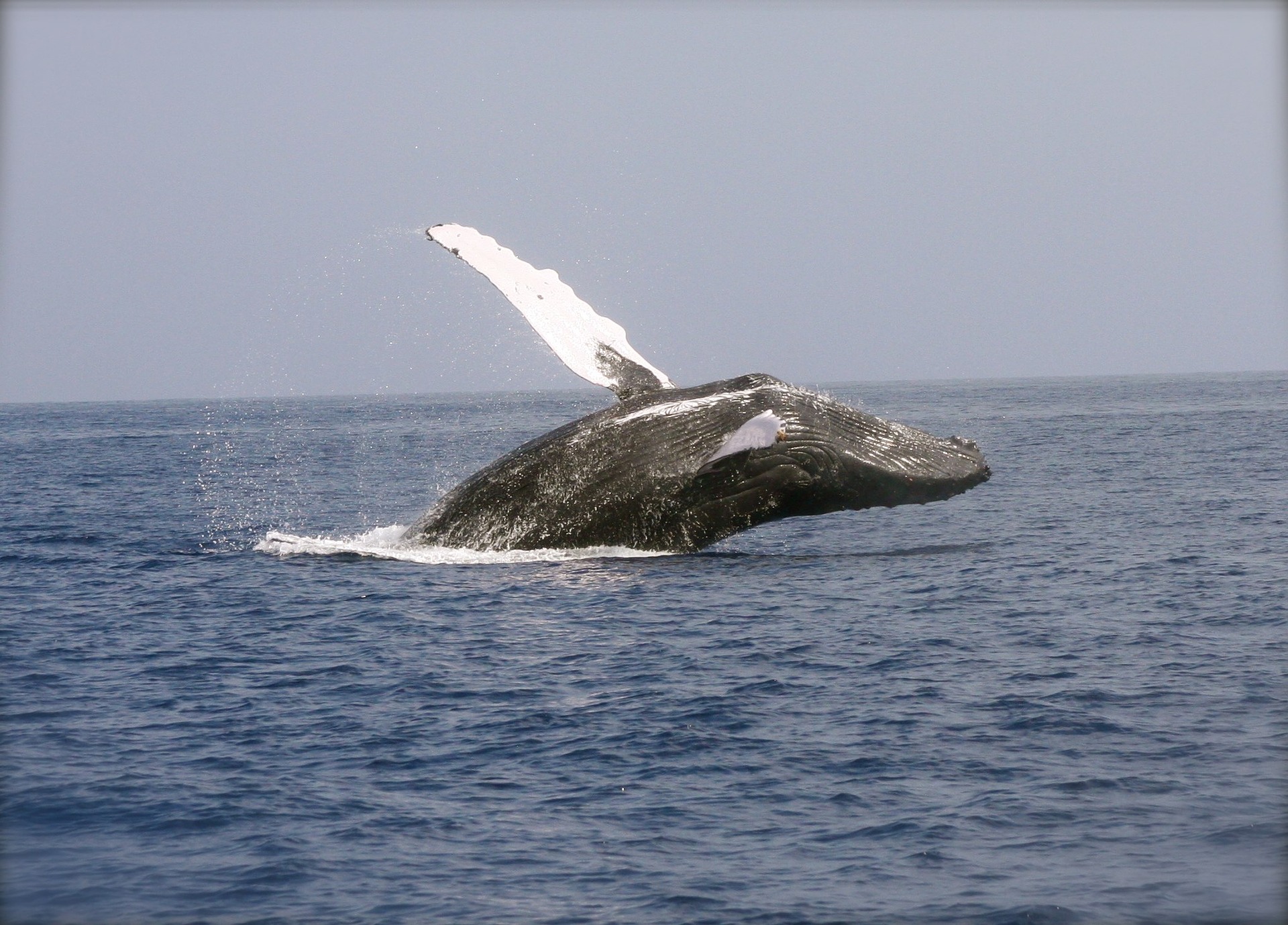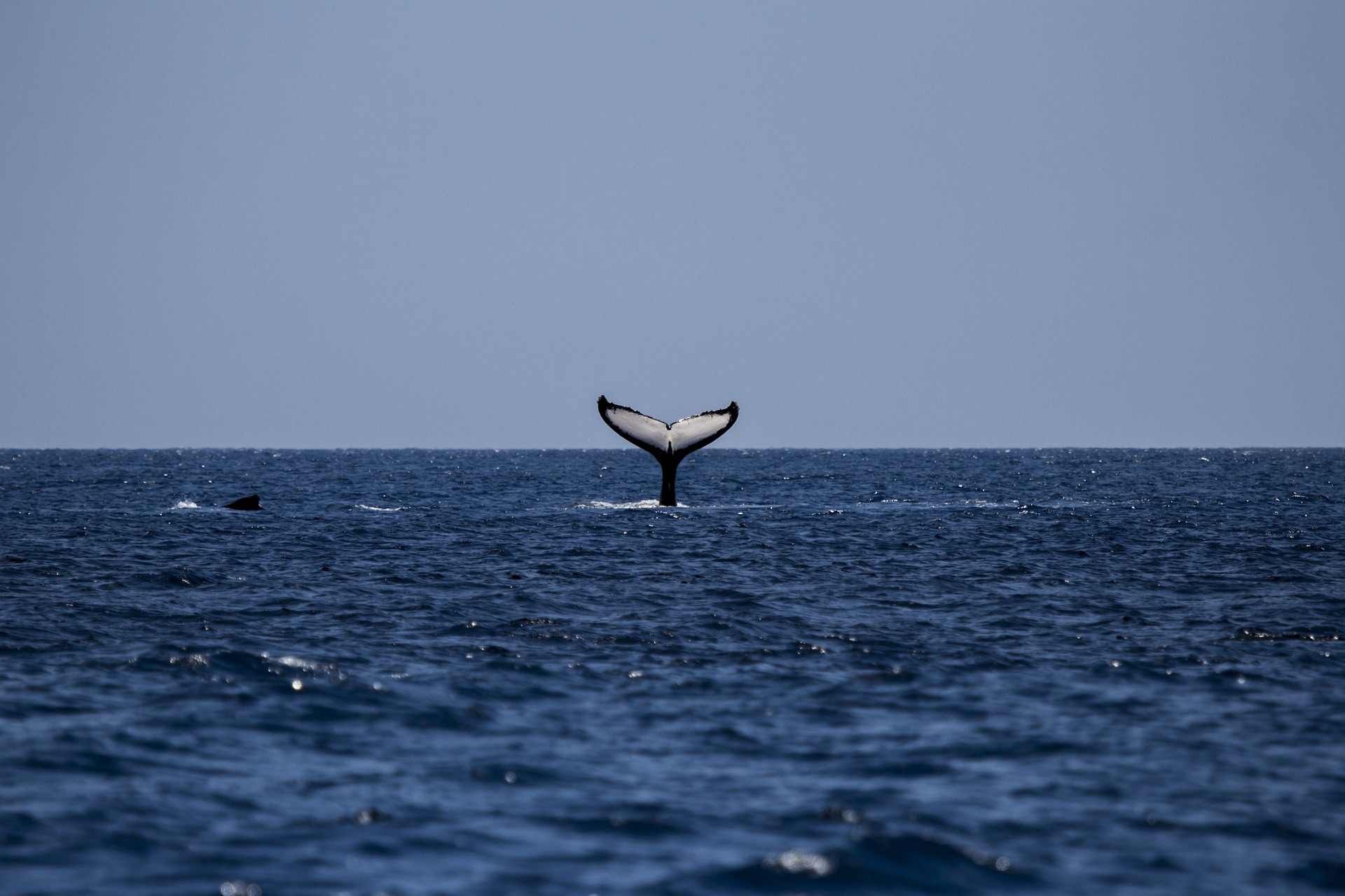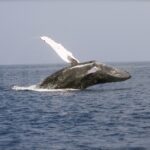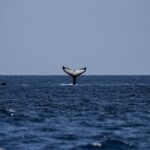Humpback Whale
(Megaptera novaeangliae)
Truly a sight to behold, this giant of the ocean obtains its name from the distinct large hump on its back, which can be seen as the whale arches its back when diving. Sightings of this marvellous mammal along the Otways coast are rare, but not impossible.
DESCRIPTION
Humpback Whales are one of the biggest mammals in the ocean, reaching sizes bigger than a bus. They have distinct characteristics that make them easily distinguishable from other whale species – a knobbly head, long flippers, a black and white patterned underside and a large dorsal hump. A truly spectacular marvel, these inspiring marine mammals glide effortlessly across the seas covering tens of thousands of kilometres each year. Remarkably, they can hold their breath for up to one hour!
Humpbacks inhabit the open ocean across the world. Populations in the southern hemisphere spend the summer months feeding on krill and small fish in Antarctic waters, before migrating towards the warmer temperate seas near the equator to breed in winter. After a gestation period of approximately 12 months, calves stay alongside their mothers for a year. It is only after about seven years that sexual maturity is reached.
During the breeding season, male humpbacks produce long complex vocalisations that last for several minutes and project thousands of kilometres through the deep ocean waters. These ‘songs’ are one of the most unique and awe-inspiring phenomena that can be heard in the ocean. Although not conclusive, they are suspected to be associated with mate selection.
Humpback whales are a conservation success story in Australia, with the east coast population recovering from little over 100 remaining individuals in the 1960s to approximately 8000 today. The population continues to make a slow steady recovery each year, although they continue to face threats from declining prey abundance (due to climate change), ship strikes and entanglement in fishing gear.
Seeing these magnificent creatures just offshore from the Otways is uncommon, but sightings do periodically occur between June and October each year as humpback pods migrate. If you do catch a glimpse of one from the hills of Wildlife Wonders, consider it the cherry on top of your visit!




